We start our journey in the western part of Kőbánya, and in the longitudinal direction, we visit its more famous parks and promenades. Népliget is also part of Kőbánya, but we will deal with it in more detail in another article because it needs a separate discussion.
We start our walk at the Church of St. Ladislaus. It can be approached from so many directions that we cannot even list it now, but we arrived by Tram 3. The imposing building of Szent László Grammar School is already striking, but the church is a real Lechner masterpiece. To this day, the Zsolnay tiles on the roof shine in the sun. The statue of the designer also stands on a stepped platform - very tasteful workmanship. And the two together give a good atmosphere to start our tour.
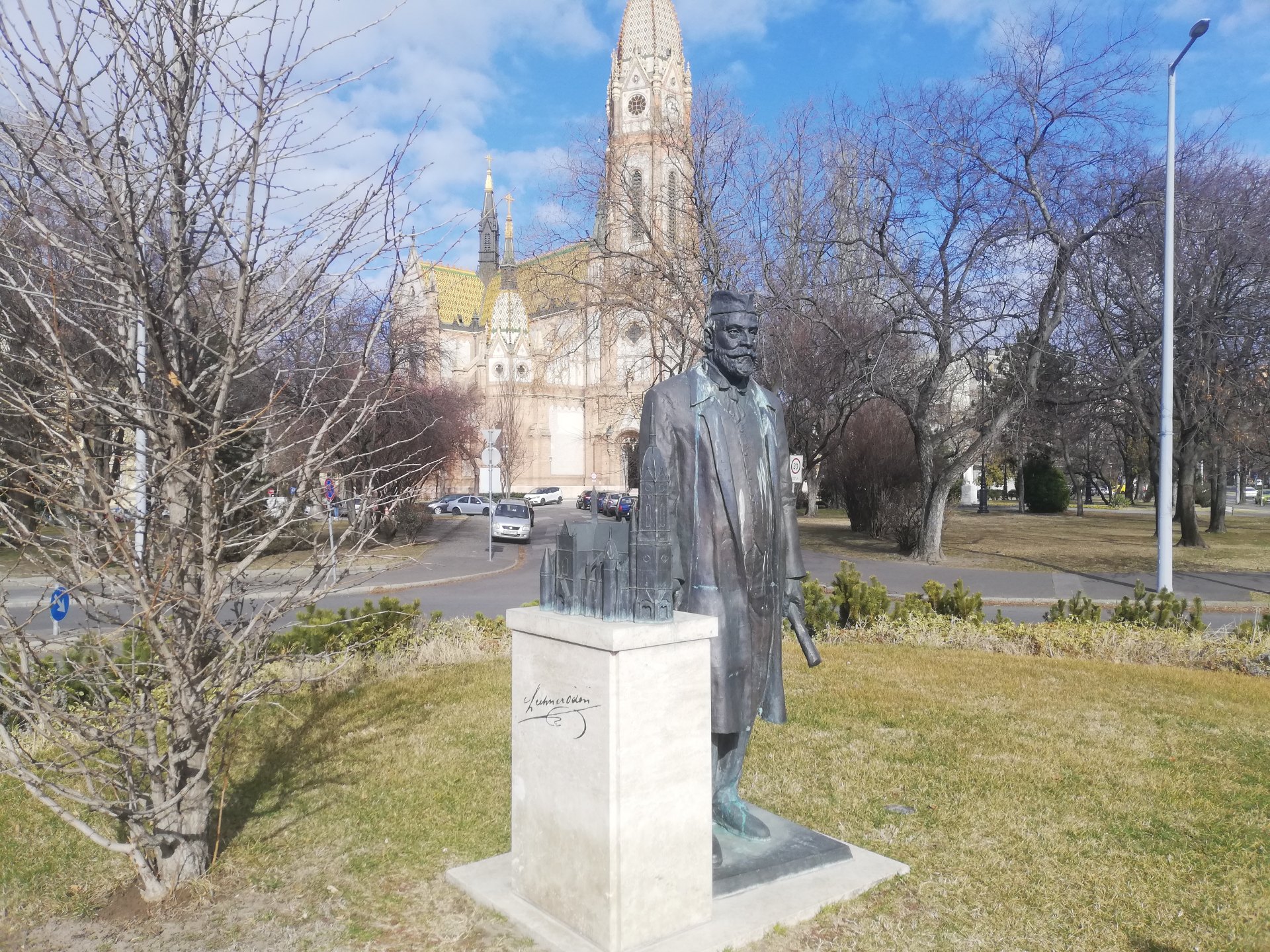
The artist with his masterpiece in the background: Ödön Lechner and the church in Kőbánya (Photo: Dávid Palotás/pestbuda.hu)
We will make a small detour before to the beautifully renovated building of the National Self-Government of the Polish Minority on Állomás Street. The other end of the Állomás Street opens into the Kőbánya-Alsó Railway Station, the bus terminal there, the whole Mázsa Square and Liget Square could use a little renovation. The 1956 monument is already a worthy memorial on the corner of the square.
On Kápolna Street, we turn back to Kőrösi Csoma Sándor Road, here the inscription I Love Kőbánya is not carved out of plastic, but stone, it is an imaginative solution after many similar selfie-compatible town name installations.
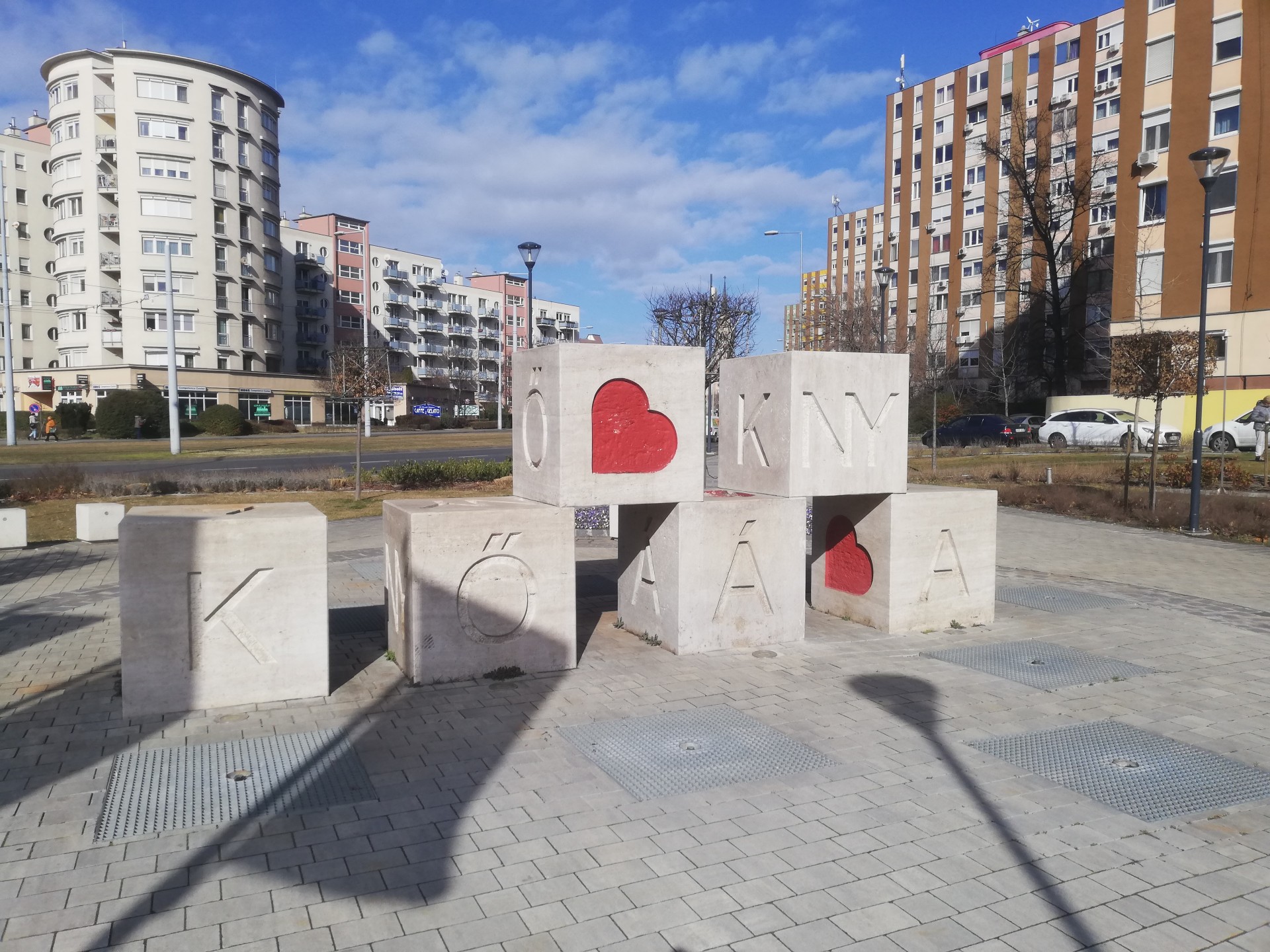
The solution that is different from the usual is also attractive (Photo: Dávid Palotás/pestbuda.hu)
In addition to the colourful panel houses here, the brownish panels on the other side of the road have a gloomy atmosphere, even in sunlight. A hint of shade change can make a big difference...
We return to our starting point, and we can already find two monuments about the Hungarians opposite the church. The wooden double cross monument fits tastefully among the trees, but the old monument of carved limestone would be worth restoring, unfortunately, the runic writing is barely readable anymore. In its heyday, it may have been more beautiful in its snow-white state. It also seems rather strange that people are bustling next to it in the small producer market, without even knowing what they are passing by.
We soon arrive at Rottenbiller Park, which is a small grove between the houses. Surprising, but there is not much rubbish, even though we brought a bag to collect the recyclables. Of course, we are glad we do not have to carry or especially find waste. The entrance to the cellar system in Kőbánya opens here. They use to take guided tours, it is worth visiting, an exciting underground world unfolds before us from the past.
If we walk through the alleys to Csajkovszkij Park, we arrive at another, larger green area in the heart of the district. Sculptures of composers welcome us in the form of works much larger than reality.
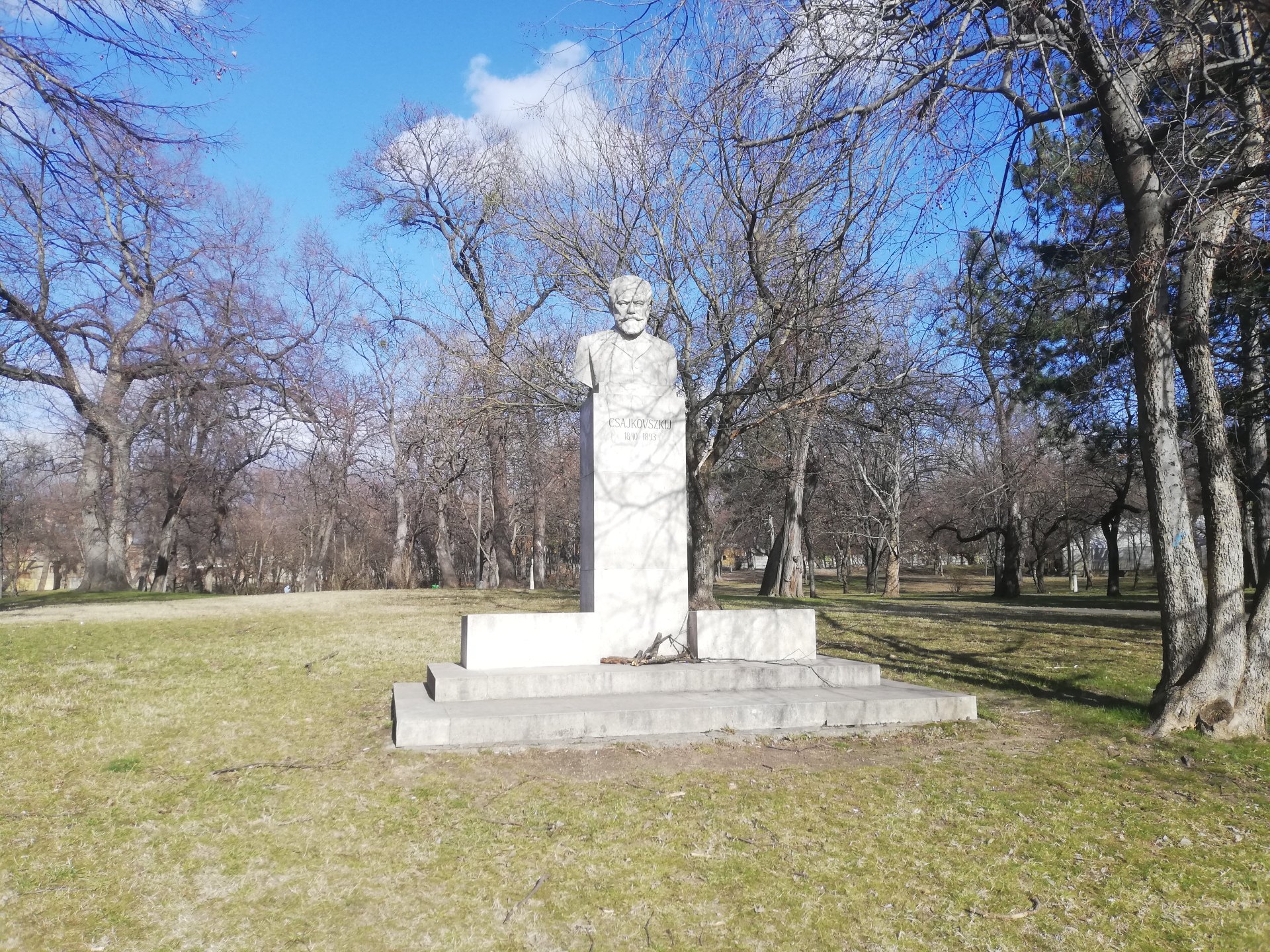
Statue of the naming composer Csajkovszkij at the entrance to the park (Photo: Dávid Palotás/pestbuda.hu)
Unfortunately, there is more rubbish here and the park is more neglected than Rottenbiller Park, but this is also because it is surrounded almost entirely by a thick concrete wall, which does not give the impression of a friendly place. Beyond the east side of the concrete wall is the Havas Villa, designed by Károly Hild, reminiscent of the land of the former wealthy lords in its classicist style. Csajkovszkij Park was once the garden of the Villa.
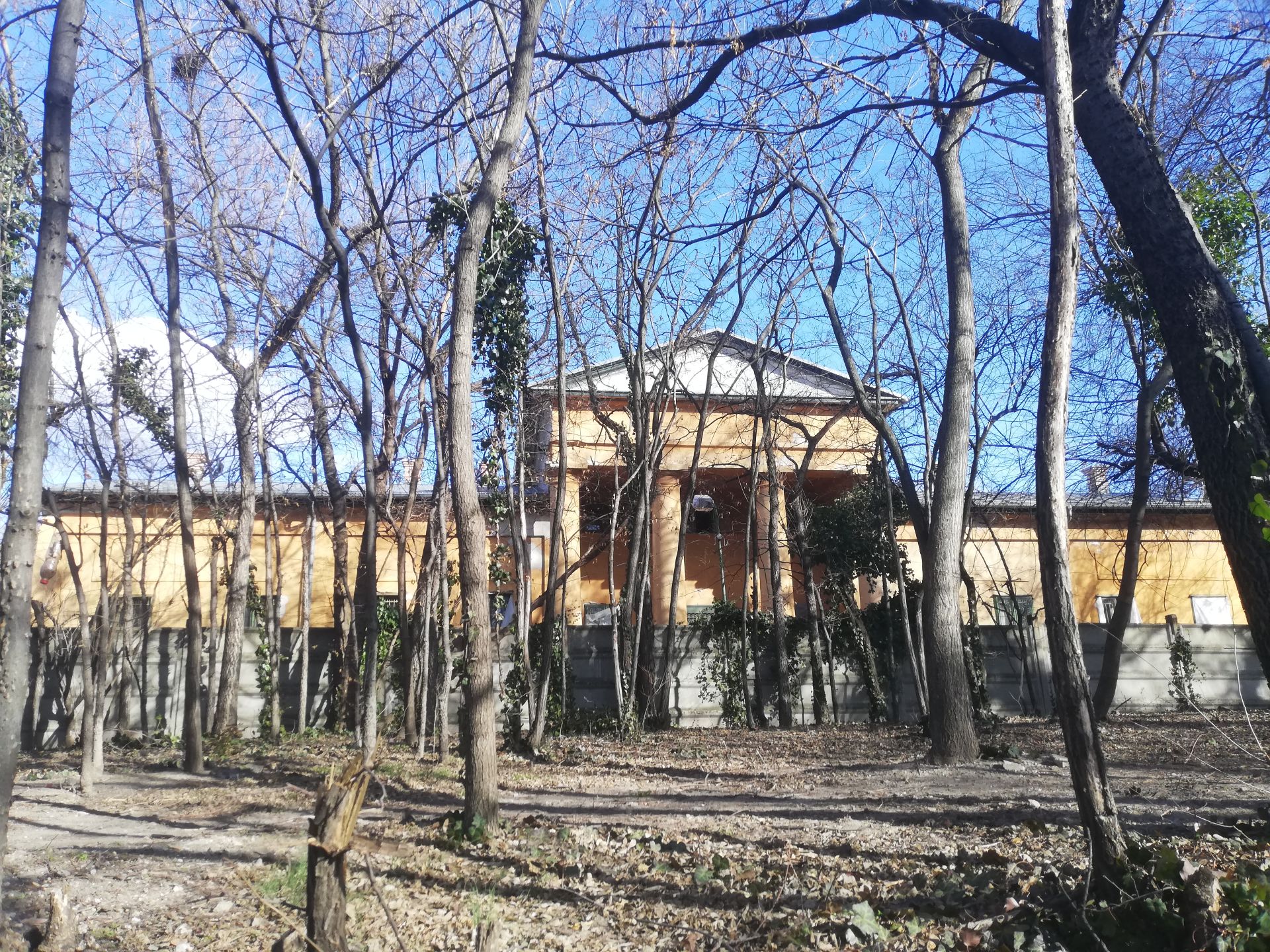
The concrete wall in front of the Villa is not the best solution (Photo: Dávid Palotás/pestbuda.hu)
The accessible part of the cellar system ends at the Villa, usually, they also show the building at the tour. It is also worth mentioning that the Fire Museum is located at Csajkovszkij Park, on the other side of Kápolna Street. Unfortunately, the building is in a very dilapidated condition, it is also temporarily closed, we hope for a better future for the museum because its exhibition is exciting.
Walking up Ihász Street, we pass the Kőbánya Water Reservoir. Its surface buildings also bear witness to the classicist past. It is an interesting mix that, in addition to the multitude of ruined factory buildings, the earlier golden age of Kőbánya inevitably appears. Opposite the water reservoir is a fenced, huge empty plot, probably with the demolished remains of an old factory building. It still provides a catchy sight.
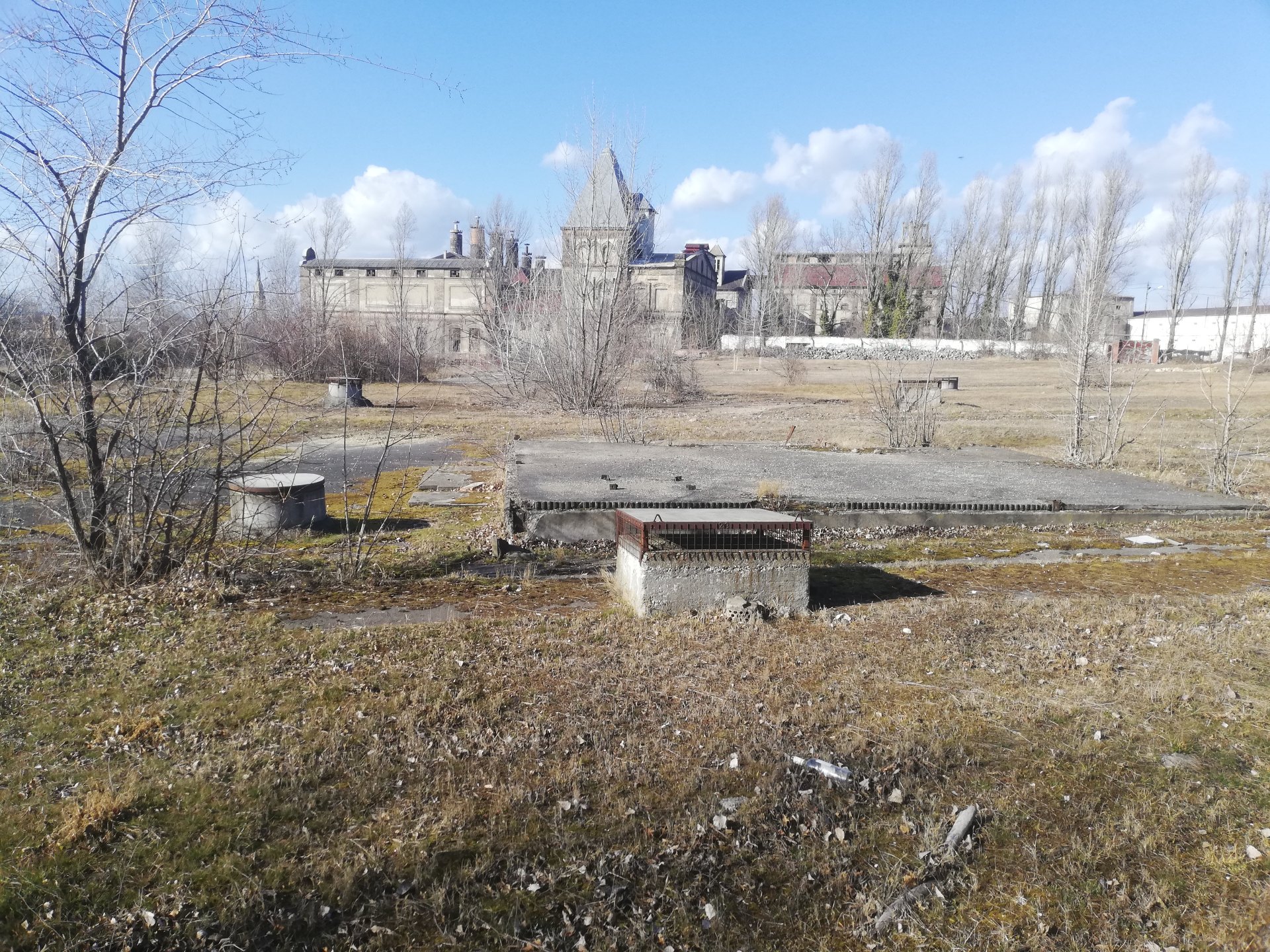
The old factory buildings radiate an ancient atmosphere (Photo: Dávid Palotás/pestbuda.hu)
From here, the famous Guard Tower (Csősztorony) is just a few steps away. It also returns in the coat of arms of Kőbánya. In the old days, there were almost only grapes on Óhegy, so the tower was built to protect it against thieves in the 19th century. We would not even think how high we are suddenly: peeking out between the houses, we can see far to Buda, the city is almost below us.
Returning to the Guard Tower: it was built in 1844 and contains several style features, so it can be mentioned as one of the beautiful examples of Hungarian Romance. There is a bistro in it today, but the local council has long been planning to relocate its local history collection here. We support the plan, especially if visitors could go up to the tower. The grapes were no longer replanted in Kőbánya after the phylloxera destruction in 1875. It is interesting that in the famous restaurant of Kőbánya, the Torockó Restaurant, you can also see a beautiful painting of the tower.
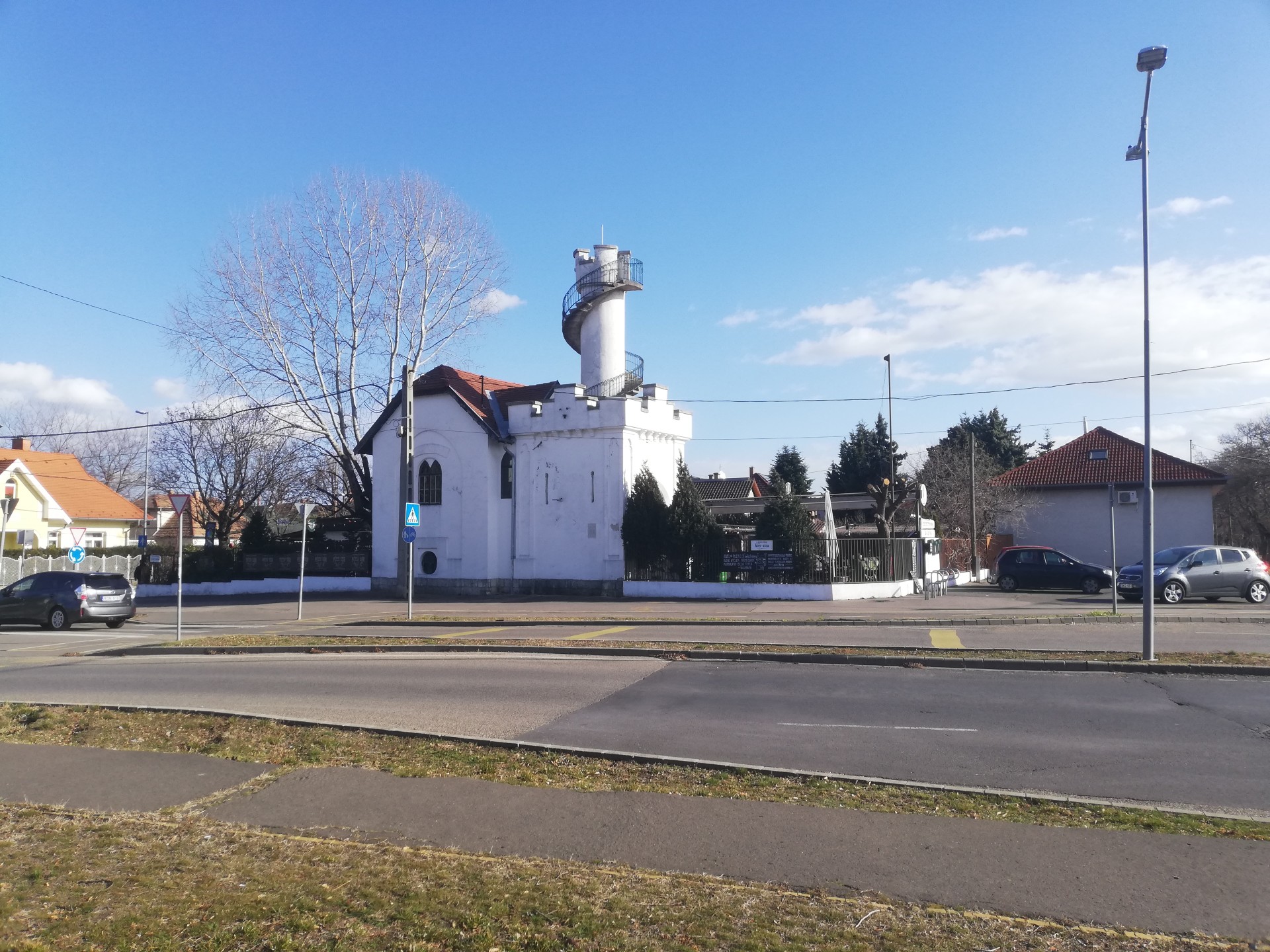
The Guard Tower has changed almost nothing over time (Photo: Dávid Palotás/pestbuda.hu)
The Guard Tower is in the corner of Óhegy Park. This is the largest public park in Kőbánya after Népliget. What was really gratifying to us was that immaculate cleanliness greeted us. Dog walkers, runners and small children took turns passing by us. It was a very pleasant surprise, it destroyed all our stereotypes. We had similar experiences before elsewhere, all of which means the city is evolving and the infamous neighbourhoods are being replaced by areas that are becoming famous.
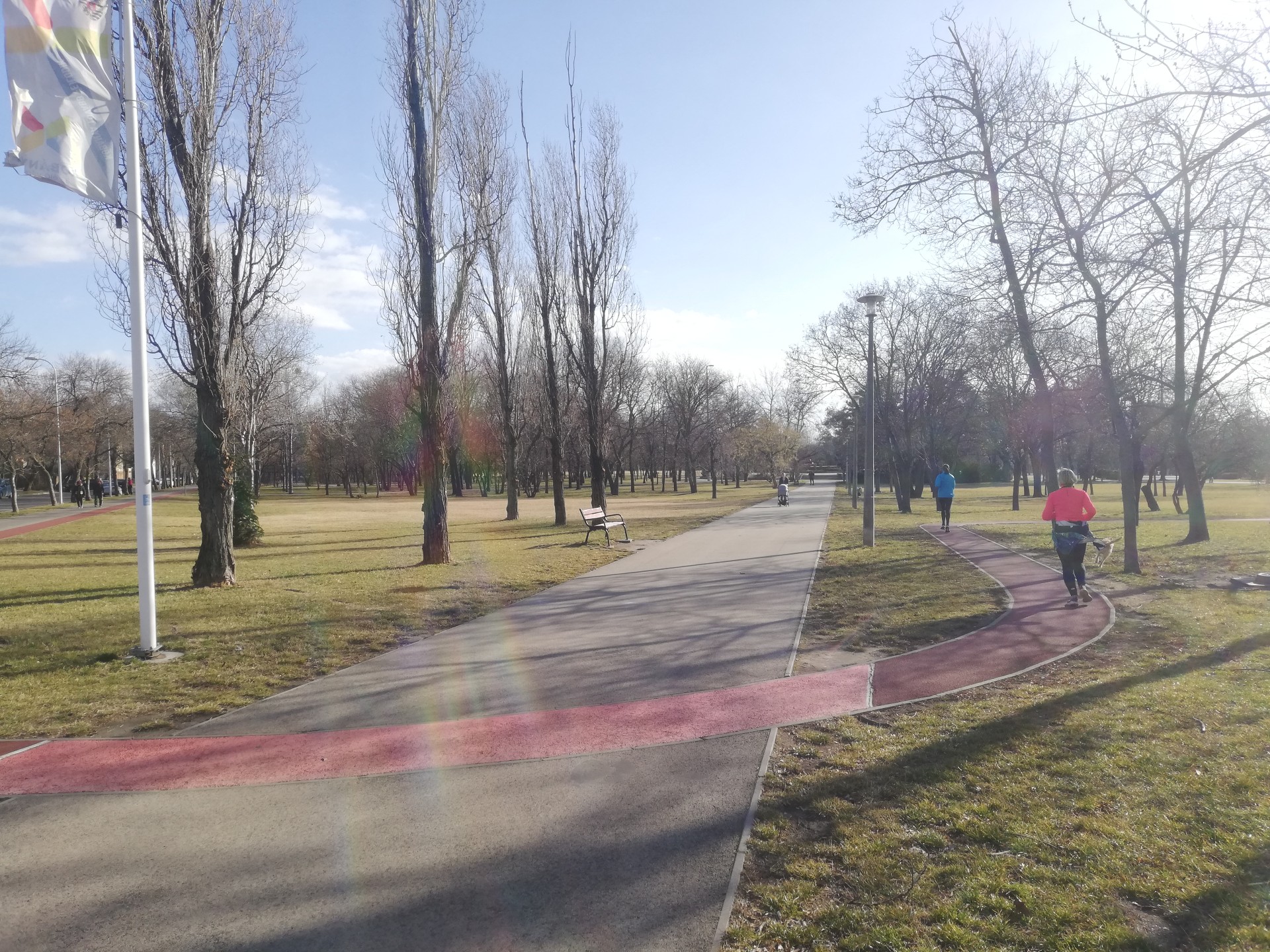
The Óhegy Park surprised us with its cleanliness (Photo: Dávid Palotás/pestbuda.hu)
After Óhegy, we also wanted to discover the Gergely Park in Újhegy, but it is completely surrounded. This is obviously an easier way to preserve, but how can a park of this size be fenced off between the panel houses? That was incomprehensible to us. As far as we could see, it was not particularly trashy, so it is somewhat maintained, which in turn reduced our sadness. We can also hope that some kind of community function will be given to the area.
Crossing the Sibrik Miklós Road, we reach the Bottomless Lake in Kőbánya: the Bányató Park. It is very similar to its sibling in Buda, their past is similar: the image of today developed from the infiltrating, accumulating water of an abandoned mine cavity.
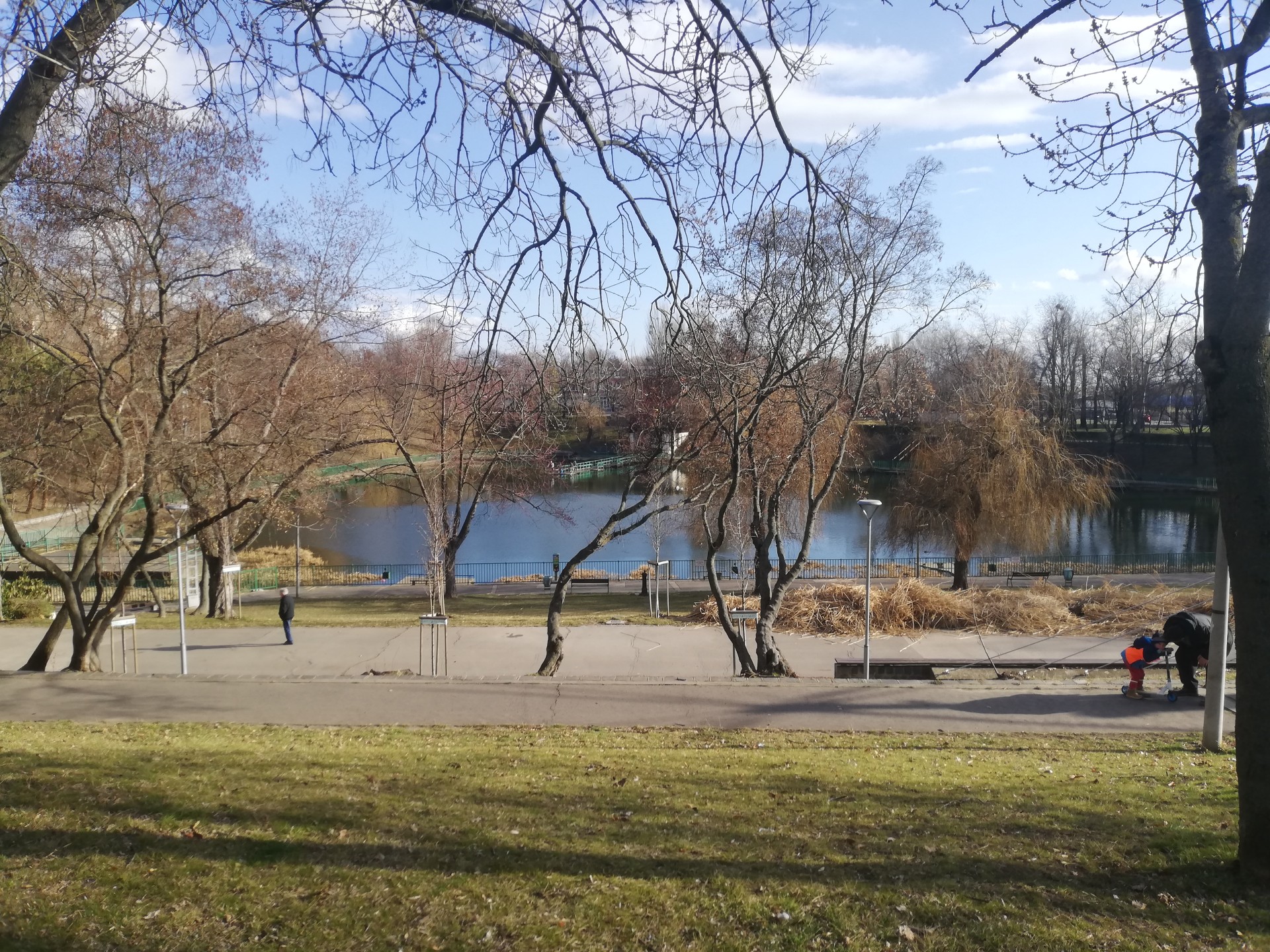
At first glance, it does not seem that we are not in Buda (Photo: Dávid Palotás/pestbuda.hu)
It is characterised by reeds, chirping birds, one or two anglers and promenades. We really missed any kind of water surface from Kőbánya, here it is now. A very vivid monument was erected to the brick workers on the shore. We could not even count how many brick factories operated in the area long ago.
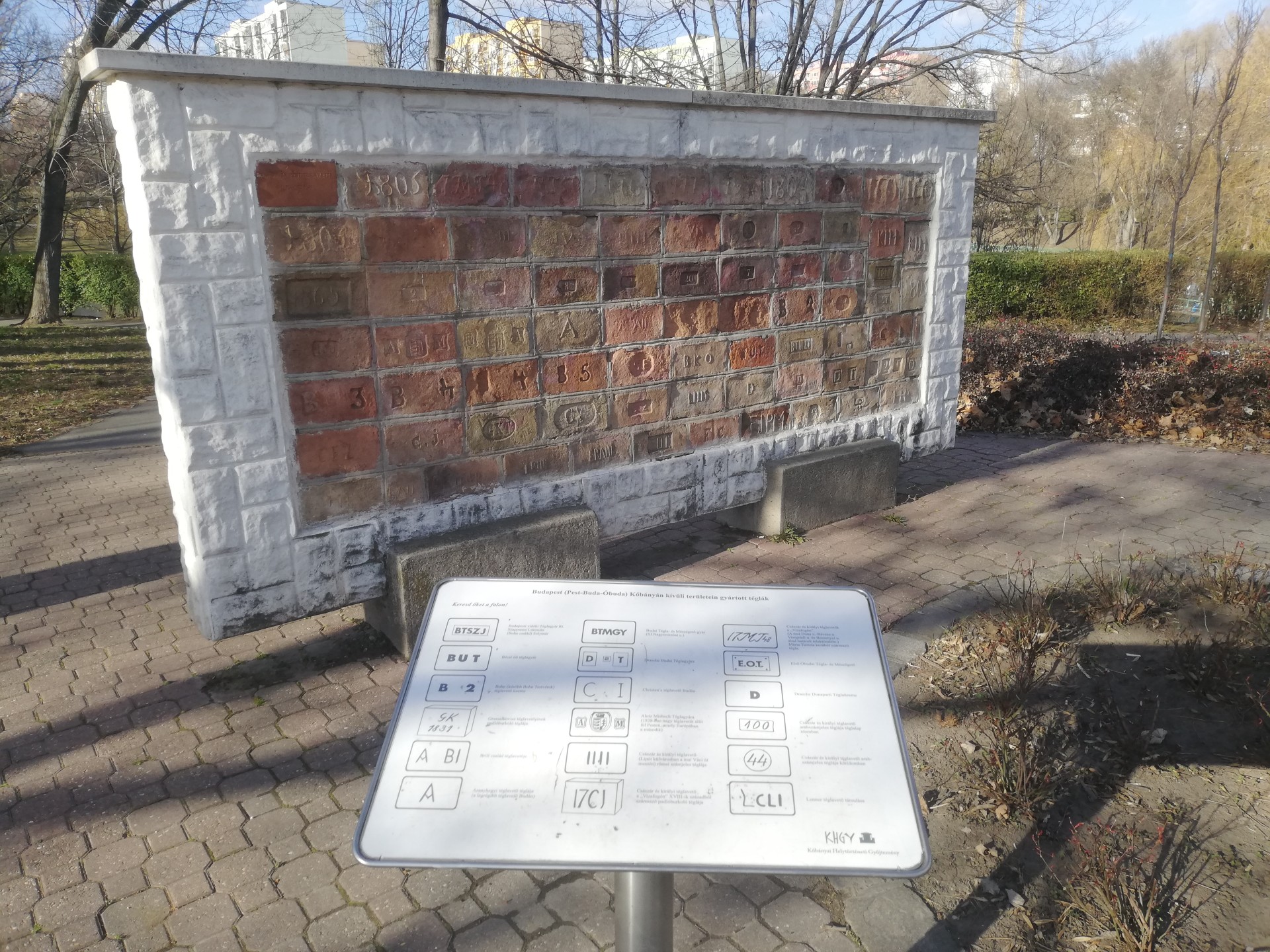
One brick from every factory in Kőbánya is built into the wall, with the characteristic inscription of the factory on them (Photo: Dávid Palotás/pestbuda.hu)
On the other side of the lake is a huge monument of steel cable erected in the previous system, which exceptionally does not spoil the overall picture, although it does not improve it. Maybe this just needs to be renewed.
Finally, the last stop on our trip to Kőbánya is Sportliget. There is really terrain here for all kinds of sports: a basketball court, a soccer field, a teqball field, a football tennis court, an outdoor gym, to name just the best known. It was a special pleasure for us to have a cableway and two metal, enclosed slides in the park, from which the view is quite great. Although the proximity of high-voltage transmission lines worsens the comfort zone, and the same can be said in the rest of Kőbánya, it is now a feature.
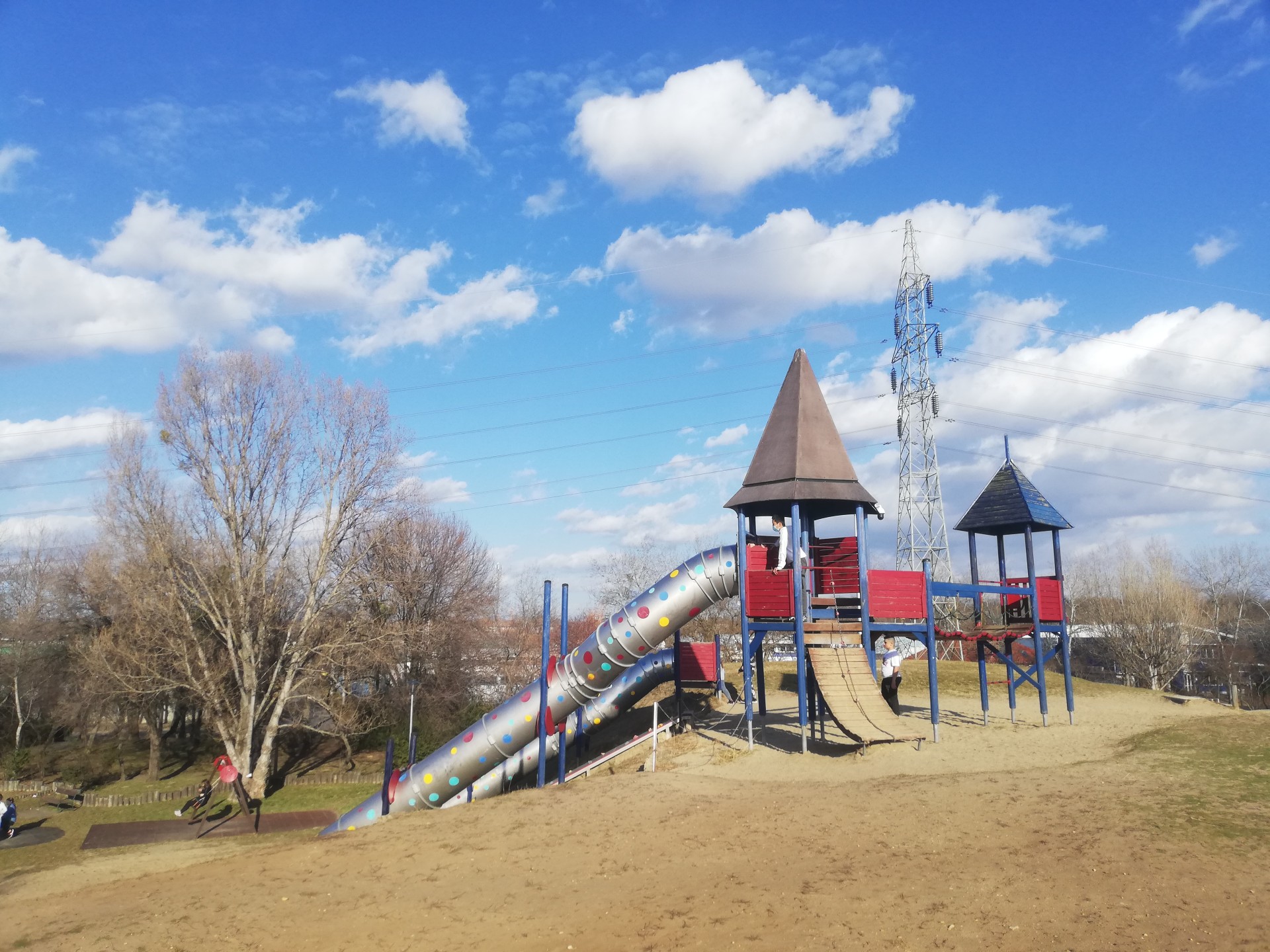
Slides from the hill, from here the cableway also starts. The wires in the background (Photo: Dávid Palotás/pestbuda.hu)
We ended our visit at KÖKI, as beyond the Sportliget stretches the 18th District.
We can say about the 10th District that with its former legacy, the district is finally starting to do something, and the amount of garbage was much less than it was expected in advance. Several outer districts of Pest could envy the cleanliness of the Óhegy Park, although Kőbánya is much worse in terms of conditions. We can think here of the many dilapidated factory buildings, the large panel plots, or even the many power lines that go everywhere.
It is definitely commendable that we have been able to see several new public works of art, barely a few years old. We recommend visiting the parks of the district, even along the route detailed in the article, because sometimes it is worth putting down our prejudices.
Cover photo: The Óhegy Park in Kőbánya (Photo: Dávid Palotás/pestbuda.hu)

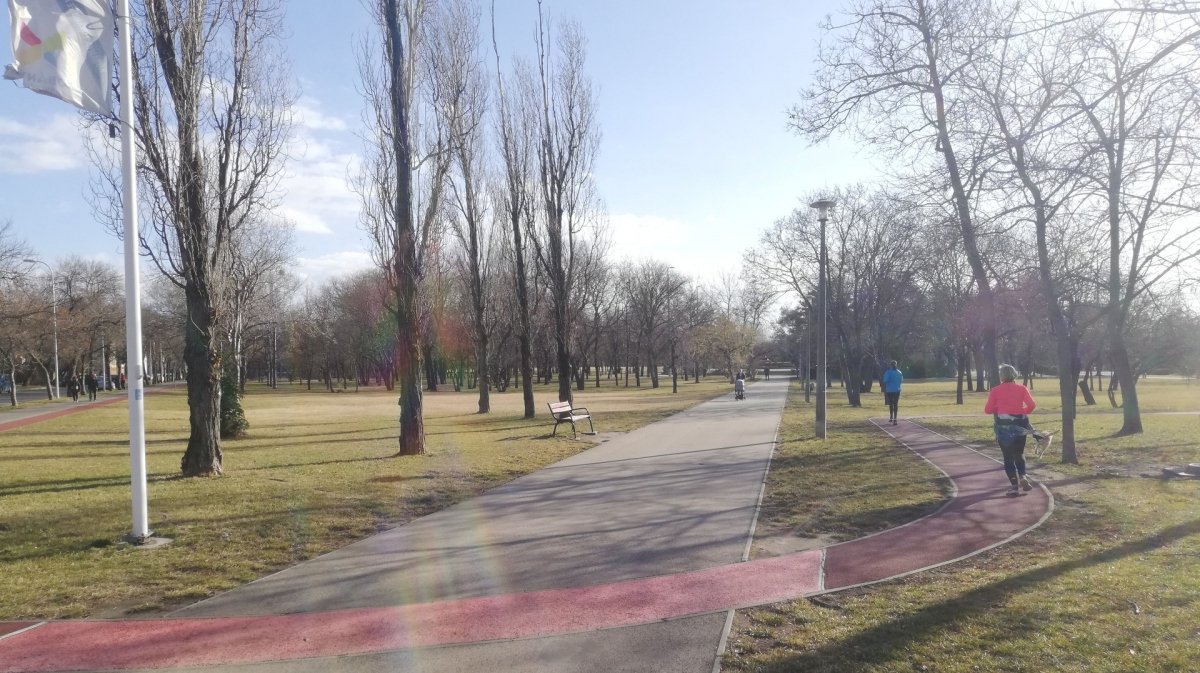
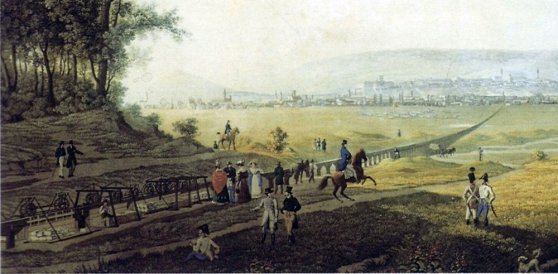
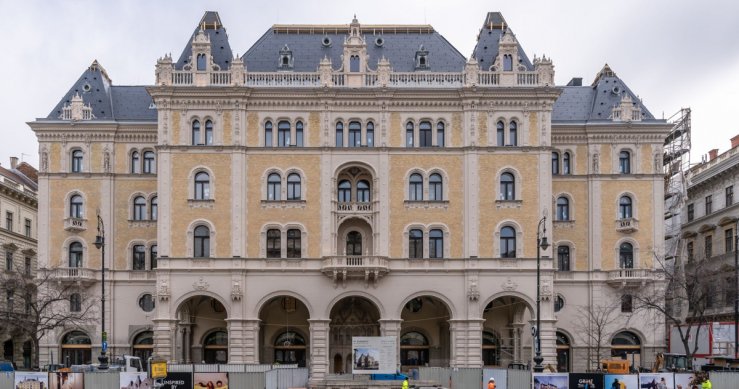
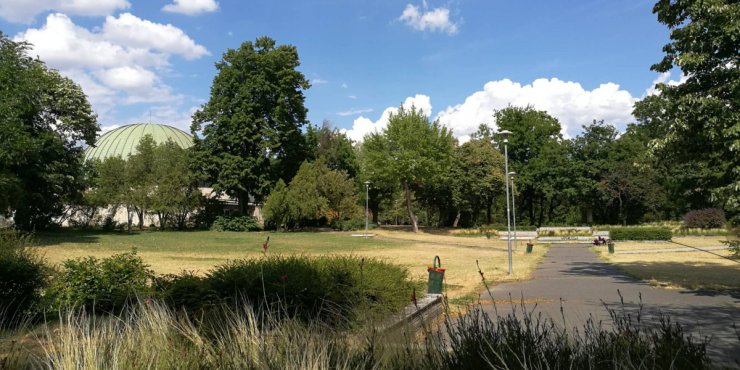

































Hozzászólások
Log in or register to comment!
Login Registration